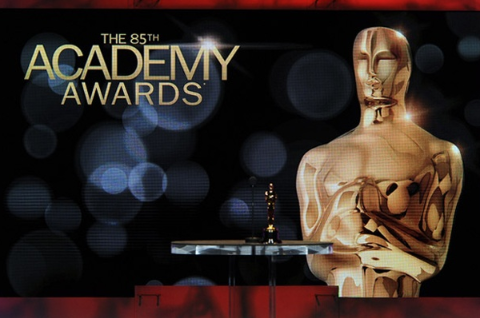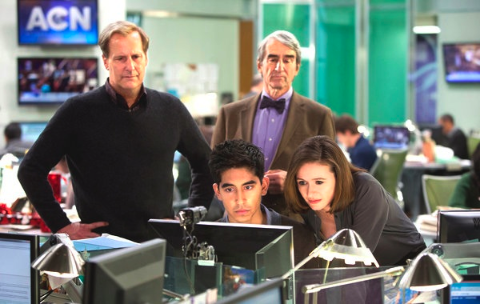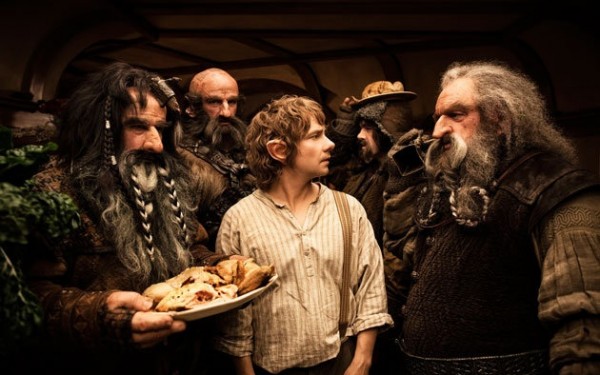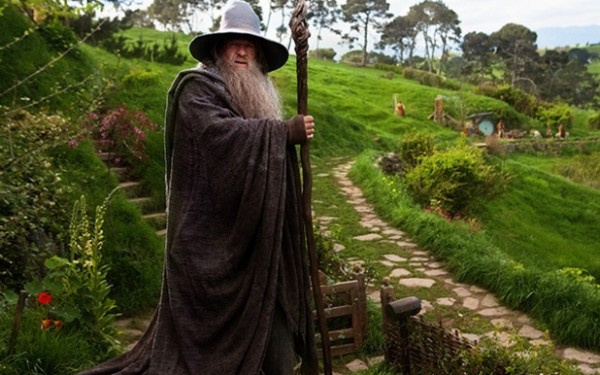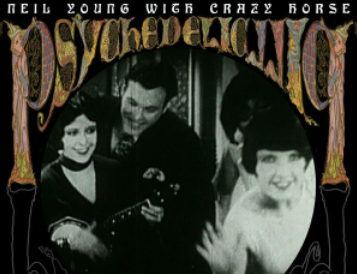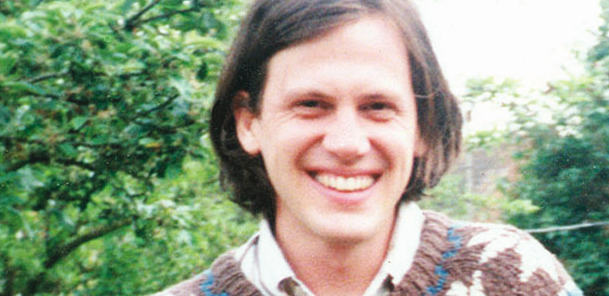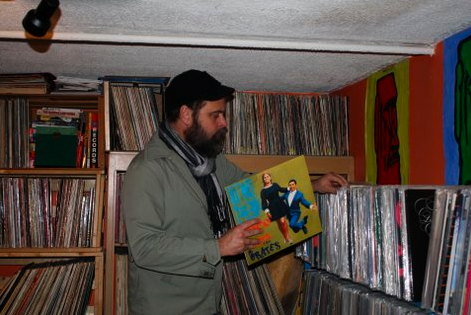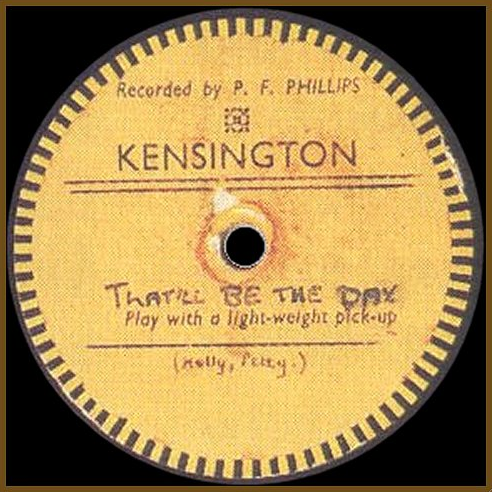Oscar Predictions From Somebody Who Has No Business Making Them ■ by Craig J. Clark
There’s a very good reason why I’m not in the Oscar prognostication business. In my Top Ten Films of 2012 article I singled out two performances which I believed merited some measure of recognition from the Academy and, true to form, when the nominations were announced last month, Denis Lavant failed to score one for his sterling work in Holy Motors and Rachel Weisz’s revelatory turn in The Deep Blue Sea was similarly passed over. I also find it hard to fathom that Paul Thomas Anderson’s The Master didn’t get nominated for Best Picture, Best Director or Best Original Screenplay, but at least at least it can crow about its three acting nods. Whether any of them will translate to actual wins is anyone’s guess. And when you get right down to it, guesswork is all it really is.
■
Ever since the nominations were announced, a lot of ink (both digital and actual) has been spilled by people in the industry and those standing outside it, all sharing their thoughts about who was snubbed and who’s likely to go home empty-handed come February 24. Some of these people may have even seen all or most of the films that are nominated, but in the field of entertainment journalism that’s hardly a prerequisite. With that in mind, here is my idiosyncratic take on who’s likely to win in the major categories, and who actually should win.
◗ Best Picture
It’s a nine-horse race this year, and at present I only really have five horses in it: Amour, Beasts of the Southern Wild, Django Unchained, Life of Pi, and Silver Linings Playbook. Of the four that remain, I strongly suspect I will have seen Lincoln and Zero Dark Thirty by the time this issue goes to press, which just leaves Argo (which I had ample opportunities to see when it was released last fall) and Les Misérables (which holds no interest for me whatsoever). And since the Academy declined to nominate Ben Affleck or Tom Hooper for Best Director (or Quentin Tarantino or Kathryn Bigelow, for that matter), their films don’t have much of a chance of taking the top award anyway. In many ways, Best Picture appears to be Lincoln‘s to lose, but if by some miracle that comes to pass, I’d like to see it be lost to Amour just because. Even sight unseen (since it won’t be coming to the IU Cinema until the week after the Oscars are given out), Amour is my pick.
◗ Best Director
And Michael Haneke is my pick for Best Director, even though chances are great that the Academy will give it to Steven Spielberg, whose last nomination was for Munich. Of the other nominees, Life of Pi is well-regarded enough that Ang Lee could be a spoiler (especially considering his last time up to bat was with Brokeback Mountain), and David O. Russell is something of a wild card thanks to the heat behind Silver Linings Playbook‘s clean sweep of the acting categories (the first time that’s happened since Reds pulled off the same feat 32 years ago). As for Benh Zeitlin, since he’s in such august company with his first feature, he should consider that it’s an honor just to be nominated and leave his acceptance speech at home.
◗ Best Actor
Of the five nominees, I’ve only seen two of their performances, but that hardly matters since everybody and their brother knows Daniel Day-Lewis has a lock on this. That’s really too bad for Bradley Cooper, who proved he was more than just a pretty face with Silver Linings Playbook (no matter how problematic its depiction of mental illness may be), Hugh Jackman (who used his natural singing ability to his advantage in Les Misérables), and Denzel Washington (who, like Day-Lewis, already has two Oscars in his trophy case). If it were up to me, though, the little gold statuette would go to Joaquin Phoenix for his incredibly brave performance as a troubled World War II veteran searching for a purpose in The Master.
Best Actress
This is one of the more difficult categories to handicap since its nominees are all over the map in terms of age and experience. At 9 years old, Beasts of the Southern Wild’s Quvenzhané Wallis is the youngest performer ever to be nominated for Best Actress, and at 85, Amour’s Emmanuelle Riva is the oldest. And the only other nominee I’ve seen is Jennifer Lawrence in Silver Linings Playbook, which seems like a real long shot to me. I expect this is the one category where the Academy and I will align, though, with the award going to Riva for what I can only presume is a harrowing — and touching — performance.
◗ Best Supporting Actor
It’s been noted that all of the nominees for Best Supporting Actor this year have already won an Oscar, so there’s no chance of the Academy going, “Hey, we kind of owe Alan Arkin, don’t we? Let’s go ahead and give it to him.” For my money, Philip Seymour Hoffman is the heavyweight in this category since his part in The Master is really a leading role, but I believe the Academy will give it to Robert De Niro in recognition of the fact that his performance in Silver Linings Playbook represents one of the increasingly rare occasions where he actually appears to give a crap instead of just appearing in it. (Can you believe the last time he was nominated was for Cape Fear? Talk about a dry spell.)
◗ Best Supporting Actress
This one’s always a toss-up. As much as I enjoyed Jacki Weaver in Silver Linings Playbook, I don’t see her swaying the voters, and I predict that Amy Adams will wind up being the third nominee from The Master to go home empty-handed. That leaves the three performances I haven’t seen, so I’m going with my gut and saying Sally Field will take home her third Oscar (giving her a perfect record) for playing Mary Todd Lincoln.
◗ Best Original Screenplay and Adapted Screenplay
The screenplay awards tend to be where the Academy makes up for some oversight in the bigger categories. (Think Pulp Fiction netting Quentin Tarantino and Roger Avary the Oscar for Best Original Screenplay when many thought it should have bested Forrest Gump in the Best Picture race.) Accordingly, I fully expect screenwriter Mark Boal to spin Best Original Screenplay gold out of Zero Dark Thirty‘s failure to take home the top prize. If I had my druthers, though, I would much rather see it go to Wes Anderson and Roman Coppola for their sweetly perceptive coming-of-age tale Moonrise Kingdom (which received no other nominations). And while Tony Kushner is a sure bet to win Best Adapted Screenplay for Lincoln, I believe Benh Zeitlin & Lucy Alibar’s beguiling script for Beasts of the Southern Wild is the one more worthy of recognition.
◗ Best Animated Feature
Since I haven’t seen any of the nominees for Best Documentary or Best Foreign Film (which is far from unusual considering the limited distribution those receive), the final category I’ll be weighing in on is Best Animated Feature, which I feel uniquely qualified for since I managed to see four of the five nominees. (I chalk this up to the fact that the Academy didn’t go for anything off the beaten path, like last year’s Chico & Rita or A Cat in Paris, or 2011’s surprise nomination for The Secret of Kells.) With ParaNorman being the odd one out for me, that leaves Pixar’s Brave, Aardman’s The Pirates! Band of Misfits, and Disney’s Frankenweenie and Wreck-It Ralph. All solid films (although some are solid-er than others), but my pick for the best of the lot is the endlessly inventive (and lovingly nostalgic) Wreck-It Ralph. I’m pretty sure there are few gamers in the Academy, though, so they’ll probably give it to Brave instead, and I won’t kick up a fuss if they do. After all, I’m used to being wrong about these things.
▲
The Ryder, February 2013

